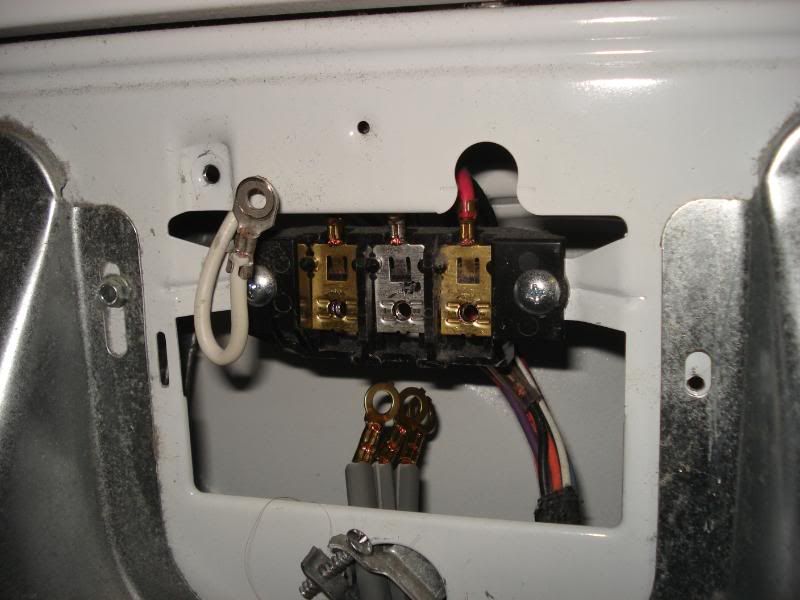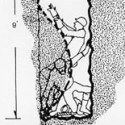|
Our garage has a single porcelain socket for a light. Currently it has one of those Y socket things with 2 CFLs screwed into it. I'd like to replace the existing light with a T8 strip, and also add two other fixtures - probably a total of three 8 foot T8 fixtures. Would romex stapled to the joists from below be okay (with insulated staples), code wise, or would I have to run it in the attic? The house was built in 1994, if it matters. If I have to I can run it in the attic, but that's a pain in the rear end that I'd like to avoid if at all possible. The garage is also finished, with regular walls/ceiling.
|
|
|
|

|
| # ? May 14, 2024 17:36 |
|
some texas redneck posted:Our garage has a single porcelain socket for a light. Currently it has one of those Y socket things with 2 CFLs screwed into it. Nope, romex isn't allowed to be surface mounted on top of drywall. To do it proper you'll have to run it in the attic, with boxes and everything. Do your work super early in the morning so you don't melt in the attic. Personally, I would just put in a 4 bulb surface mount 4' T8 fixture over the existing box. Where do you find 8' T8s anyway? I've only heard of 8' T12s.
|
|
|
|
They're probably the tandem T8 fixtures.
|
|
|
|
adorai posted:Can I safely and legally run low voltage cable in PVC conduit, down the empty space that is carved around my chimney? I figure if it does not get hot enough to ignite drywall is should be ok, but I figured I would check on the legality before I did it. If PVC is not suitable, can I use conduit made from a different material? Unless there's something stupid and specific in your very local jurisdiction there are very few restrictions on low voltage cabling. I do LV for a living so for once i'm actually talking in my professional knowledge rather than hobby! This, however, doesn't mean you should ignore wise practice. Cable routes should be decently thought out, the cable secured properly in locations not in conduit (vs lying on boards/attic insulation, hanging with huge loose slack, etc), and where practical use either outdoor rated cable or place cable in conduit. I don't feel there would be an issue running the cable where you describe. I would put the conduit as far from the heat source as practically possible and ensure it is secured such that it can't move. If you do that it should be a perfectly acceptable run. The people who i've seen have trouble with heaters and fireplaces with LV wiring just do dumb things like run it bare and up against or lying over the heat source.
|
|
|
|
Out of interest, since I'm in need for a new ground*, how is a ground line protected from incoming current, say a lightning hitting the ground near the grounding rod? Some big rear end diode and/or fuse? I've been told to pull a wire through the service duct down to garage level, then further to the next meadow (there's squat there, not even cows) and plant a rod there. That correct? --edit: The landlord is an involuntary gentle dick, I can't/won't expect him to get an electrician to do it. Also, I got a current clamp on Ebay for poo poo and giggles. What can I do with it in the house hold? (*: Before, my grounds were connected to the steel piping of the old central heating. At least I had perfect continuity between the two (Yikes?). Since new the gas heating, I don't have grounding anywhere in the apartment.) Combat Pretzel fucked around with this message at 18:58 on Jul 17, 2011 |
|
|
|
Lightning will tend to take the shortest path to ground. That is part of the reason why ground rods exist so that lightning will travel down to ground in a predetermined path and not through your equipment or people. As for driving ground rods you don't really have to do it far from your house. You just want to avoid gas/sewer/water lines when you drive them. You should drive two of them if you have no other grounding method. They each have to be eight feet long and made for that purpose. They have to be driven into the ground entirely with nothing sticking out. They have to be at least six feet apart. You may bury them if they are at lest 30" deep. The attachments made to the rod need to be built for that purpose. Ask at the store for a ground rod clamp. The conductor used needs to be sized correctly for the system. http://www.electrician2.com/calculators/t250_66.html That calculator will tell you what size you need. Thats just if you are in the good ole USA. You also need to check to see what local codes apply to grounding in your area. Now since you are renting and don't own the building you can't get the work inspected, and you will be on the hook if anything goes wrong. You can get necessary safety work done on a rental and take the cost out of your rent. You should check to see if there is a renters union or other renters advocacy group in your area to help you with that. And current clamps help you check amperage. Its not something you need to know usually in your house. But if you get a outlet line splitter you can read current on various household devices. edit: added a 'd' to 'use'
|
|
|
|
I'm trying to replace the old disgusting lightswitches with shiny new ones but I've run into a problem. I've tried rewiring the new switch the same as it was but it wont work for some reason. Could it be that there's some sort of link inside the old black box that the new one doesn't have? Or should it be wired differently? http://1.2.3.9/bmi/i.imgur.com/zoPtf.jpg
|
|
|
|
So yeah, I've also gotten a practically pristine Fluke 87V for relatively cheap on Ebay. It arrived today, and just a few moments ago, I went running around the house, poking it at everything AC (230V EU). I've currently(!) run into two issues: 1) I've a balcony light with a switch that breaks both N and L1. Yet, across a deactivated switch, I could measure 44V (connecting N/L1 to any N/L1 on the other side). 2) The bathroom light switch, I could do the same, I get 100V there on a deactivated switch. What the gently caress? This one only breaks the L1 (--edit: and N, too), but I still shouldn't be able to measure something. --edit: So I found out about phantom voltage. Could it go up by that much? Combat Pretzel fucked around with this message at 19:53 on Jul 18, 2011 |
|
|
|
Ugh, more bad wiring issues with my house. My bathroom's GFCI outlet went out some time last year (wouldn't reset) and I replaced it. It's worked and tested/reset fine since, but happened again last weekend. Is there something that is causing this to go bad, or am I just having bad luck with the GFCI's that I'm buying? They are from Leviton if it makes any difference. Another issue (possibly related) that I've noticed. We had two bathrooms remodeled last year, and the wiring was stupidly done. One of my single pole breakers is responsible for both bathrooms and a light in my kitchen. I would assume these need to get balanced properly, and I know for sure there is space in my circuit breaker to accommodate additional breakers. My only concern is how to get the wire fished from place to place. Is there a way to do this properly without destroying my walls?
|
|
|
|
kid sinister posted:Personally, I would just put in a 4 bulb surface mount 4' T8 fixture over the existing box. That would definitely give more light, but I was hoping to light up the entire garage instead of only the front half. It's a 2 car garage, I was thinking of a light parallel to each rail for the overhead door plus the fixture where the existing box is. Nemico posted:They're probably the tandem T8 fixtures. Exactly.
|
|
|
|
Combat Pretzel posted:Out of interest, since I'm in need for a new ground*, how is a ground line protected from incoming current, say a lightning hitting the ground near the grounding rod? Some big rear end diode and/or fuse? I've been told to pull a wire through the service duct down to garage level, then further to the next meadow (there's squat there, not even cows) and plant a rod there. That correct? --edit: The landlord is an involuntary gentle dick, I can't/won't expect him to get an electrician to do it. Bank posted:Ugh, more bad wiring issues with my house.
|
|
|
|
It's like buying these devices causes fate to tempt me. It appears that the inrush current of my Dyson causes the living room fuse to blow suddenly. Most fuses in this house are pretty old (they're Vynckier MCBs). Can they wear out? I've switched them on and off a few times before, when hooking up different light switches and such. The old ones are all 10A type G. Wikipedia tells me that type G is long obsolete and that their replacement are type C ones. Can I just insert new ones with the same current rating, or is that also something I should let an electrician do?
|
|
|
|
grover posted:To rule out any wiring issues, try removing the load side wiring and testing it again. As to the early deaths- could you be getting a lot of condensation/moisture in it? Poorly covered exterior GFCIs get killed all the time by rainwater penetration. Normally, bathroom ones are fine but if you have poor ventilation or there's a drip path or something...
|
|
|
|
Combat Pretzel posted:So yeah, I've also gotten a practically pristine Fluke 87V for relatively cheap on Ebay. It arrived today, and just a few moments ago, I went running around the house, poking it at everything AC (230V EU). Yes, it can. Depending on the conditions. Its why multimeter manufacturers started making duel impedance and low impedance meters. You can also buy a 'stray voltage eliminator' online. Its basically a little box that plugs into your meter and reduces the overall resistance of the meter. As for the fuse changing you want to do, I have no idea. Europe has a complex set of electrical laws. The fuse may be obsolete, but the fuse holder and the wiring may depend on that size fuse for protection. Its usually a bad idea to change fuse sizes unless you are positively sure of the consequences.
|
|
|
|
Seems to be some sort of standard, since there's fuses of different age in the same rail. I was wondering about fuse wear, because I removed all load from the fuse and the Dyson still caused that issue, while branched in a room on another unloaded 10A fuse, it ran fine. I can't wait the day I'm out of here next year.
|
|
|
|
Fuses don't really wear out. But they do have slow blow (also called time delay) fuses that might help. Try replacing them with the same type as are in the other room. I just don't know enough about the way they wire houses in Europe to be much help other then that.
|
|
|
|
This house drives me nuts. Every single 3-prong outlet is ungrounded. I finally find one that has a bare wire attached to a green screw. Happy day! When I went to replace the outlet today, just for consistency, I get a closer look. The bare wire isn't connected to the home run or the box. It's from the romex that runs to a security light.  edit: did i mention half the plate covers were held on by wood glue?
|
|
|
|
PFlats posted:This house drives me nuts. Every single 3-prong outlet is ungrounded. I assume your house doesn't have AC/MC or EMT? Those can be legit grounding methods. Hmm, you know, you could find the first receptacle on each circuit, switch it out for a GFCI, wire the rest of the circuit off its protected legs, then run around and stick on the "no circuit ground" stickers on all the faceplates. Looking at it from that perspective, someone saved you a bit of busywork. This is a longshot, but look closer at the cable's sheath. In the old days during new construction and the studs were still exposed, sometimes electricians would run the ground wire back out the cable clamp opening and screw it down onto the outside of the box using the gang screws. Get a circuit tester and test for a circuit between the hot wire and the steel box. If that lights up, then that box is grounded.
|
|
|
|
My girlfriend is rooming with one of her friends this summer at college. Her friend owns the house. They have a washing machine in the basement plugged into a GFCI. It's worked fine all summer and today she started a load of laundry and went back upstairs. At some point in the cycle it tripped the GFCI and she called me for help. I walked her through resetting it and restarting the washer, and it would run for about 5 seconds and trip the GFCI again. She called her friend who owns the house and she said that it does that if the washer is too full, and that the electrician who inspected the house before she bought it said that that always happens with GFCIs and they should just move it to a non-GFCI protected outlet. This does not sound the least bit safe to me. I originally thought nuisance tripping, but it should do that fairly regularly as opposed to if the washer gets a little extra water in it. That makes me feel like the washer has some sort of problem and the GFCI tripping is probably a good thing and keeping people from getting killed. Do you guys think it's just nuisance tripping or is something really bad happening with the washer that could kill people if the GFCI wasn't tripping?
|
|
|
|
Maniaman posted:My girlfriend is rooming with one of her friends this summer at college. Her friend owns the house. They have a washing machine in the basement plugged into a GFCI. It's worked fine all summer and today she started a load of laundry and went back upstairs. At some point in the cycle it tripped the GFCI and she called me for help. I walked her through resetting it and restarting the washer, and it would run for about 5 seconds and trip the GFCI again. The problem that she has is that electric motors in certain older appliances (washers and refrigerators are the 2 biggest culprits) can behave in such a manner that it resembles a ground fault to a GFCI. More than likely it's a complete nuisance trip. In fact, my own washer was doing this last year. Motors in more recent models are designed to compensate for this though. I noticed you said "upstairs"... Is the washer in an unfinished basement? Is there a utility sink within 6 feet? Either of those situations require GFCIs. One other thing you could try is to pull out that GFCI, look at who makes it and swap brands. That made my washer tripping problem go away. kid sinister fucked around with this message at 01:38 on Jul 25, 2011 |
|
|
|
kid sinister posted:I noticed you said "upstairs"... Is the washer in an unfinished basement? Is there a utility sink within 6 feet? Either of those situations require GFCIs. kid sinister posted:One other thing you could try is to pull out that GFCI, look at who makes it and swap brands. That made my washer tripping problem go away. Seems strange though that it supposedly only does it when the water level gets to a certain point in the washer. I would have thought a nuisance trip would happen fairly steadily.
|
|
|
|
Maniaman posted:Basement is half finished half unfinished. Washer and dryer is in the unfinished side. There is a utility sink down there by them. Nuisance trips are intermittent. If it happened every time you used the washing machine then I would suspect a insulation problem. But because it only happens when the machine is under a heavy load then it is probably not a short circuit. A commercial grade GFCI is better for appliances and will not trip as easily because of a motor load.
|
|
|
|
My current clamp from Ebay finally arrived. Immediately diagnosed my stupid Dyson. That thing draws 24A on start up, no surprise it trips an old 10A fuse. Apparently, there's inrush current limiters to put into plugs. How expensive are these things, and how does it affect motor spin up?
|
|
|
|
I have no idea how much they cost and I have never heard of ones for an outlet. Assuming it is a correctly designed inrush current limiting device it won't effect a motor at all, other then lowering the amount of current drawn during the first start up. I would expect a slow blow fuse to be much cheaper then that though. I'm a little surprised that the dyson doesn't have inrush current limiting circuitry built in.
|
|
|
|
I guess I'll switch the fuse. I don't think anyone would even notice. There's already some of mixed age, anyway. And yeah, I'm surprised that these expensive Dysons don't have a limiter, while cheap-rear end vacuums do have one. The thing runs at 6A, but draws four times that on start.
|
|
|
|
So I'm having a tiny issue with changing a 4-cord dryer to a 3-cord. I understand everything except for what I should be doing with the white wire in the upper left; I've read a few conflicting instructions. There doesn't seem to be any frame ground strap. When I took the 4-cord out, the green wire was connected to the white wire through that hole in the frame that the white wire is currently next to. I guess I'm just wondering if I should connect that white wire back to the frame through that hole, or connect it to the middle plate as I've read a couple times. I know next to nothing about wiring. Thanks!
|
|
|
|
ElectroSpecter posted:So I'm having a tiny issue with changing a 4-cord dryer to a 3-cord. I understand everything except for what I should be doing with the white wire in the upper left; I've read a few conflicting instructions. Attach that white wire to the grounding screw at the upper left. That little wire is what grounds the case for washers.
|
|
|
|
kid sinister posted:Attach that white wire to the grounding screw at the upper left. That little wire is what grounds the case for washers.  How's this? I think I was confused because that's where it was when the 4-wire was in, and everything I read told me to change where that wire went. Now that I think about it, maybe it was improperly installed when it had the 4-wire in it? This dryer has had a history of other people changing the wires.
|
|
|
|
ElectroSpecter posted:
That's right. With 3 wire cords, that extra white wire grounds the case to the neutral. In 4 wire cords, you're supposed to disconnect that white wire from the ground and only hook up the green wire from the cord to the case. A lot of DIYers (and even W/D installers) do that wrong.
|
|
|
|
kid sinister posted:That's right. With 3 wire cords, that extra white wire grounds the case to the neutral. In 4 wire cords, you're supposed to disconnect that white wire from the ground and only hook up the green wire from the cord to the case. A lot of DIYers (and even W/D installers) do that wrong. Awesome, thanks! Also, maybe now I'm just paranoid, but I tried a 2 minute test run and the inside back wall of the dryer is too hot to touch. I don't do much back-wall-of-dryer-touching, but is this normal?
|
|
|
|
ElectroSpecter posted:Awesome, thanks! Also, maybe now I'm just paranoid, but I tried a 2 minute test run and the inside back wall of the dryer is too hot to touch. I don't do much back-wall-of-dryer-touching, but is this normal? That's where the duct for the heating element is most likely. It's probably fine.
|
|
|
|
Well this is probably slightly out of place here but I couldnt find a more suitable thread and it isnt worth its own. This has become a home thread for me anyhow. It relates to bathroom fans and HVAC so it's probably kindof close. When a bathroom fan turns on they of course create a negative pressure inside the home and attempt to draw moisture and smells up out of the room they're running in as they operate. This negative pressure causes the home to have to bring in air any way it can to replace the air removed. This is my point of concern and curiosity. My home, like most southern systems where it is very hot, does not have a fresh air intake vent. My doors and windows seal very well and there are virtually no drafts that can be felt in the home during the winter. Home is about 3 years old and was built pretty tight. So this leads me to wonder a few things. 1) Is the lack of fresh air being able to enter the home from the outside hampering my bathroom fans? My master bathroom has two and it still feels like it can take a while for it to clear. Maybe this just isnt an issue for some reason I can't think of but it seems like such a well sealed home would make for some pretty ineffective bathroom fans. 2) The air that is getting in is presumably coming in via little cracks around doors and windows..just wherever it can find..and is probably not as clean as I'd love it to be. We're in the middle of a period where it has not rained for several months here in texas and it is extremely dusty/dirty outside. Is it a practical option to consider a fresh air intake with a high quality filter on it so that I have control of the air that enters the home? I know that letting too much outside air in would be shooting myself in the foot here in texas as far as my cooling bill goes but I'm curious if it might be worth considering a small (so as to limit the volume of outside air drawn in by the HVAC/fans) fresh air intake that is filtered. In my mind i see this allowing me to at least filter the air coming in as the air will enter the easiest way, my vent, which i can control the quality of. This would reduce the air's desire to squeeze in random other openings that I can't filter, would it not? Of course humidity is also a concern..we get a buttload of that here outside. I'm not convinced i need to do this or anything but I figured someone would have some thoughts on it since electricians are often dealing with bathroom insulation, HVAC systems and general home construction/efficiency. Perhaps it's just a bad idea and thats why it wasnt done in the first place. I've also heard of active fresh air intake systems that remove humidity or cross the incoming air into the hvac stream so that it can have humidity removed. This creates a positive air pressure in the house and would greatly reduce dust entering via undesired sources. Are there benefits to this kind of setup? What kind of toll would it have on my hvac efficiency?
|
|
|
|
So this is a bit of a legal question and not so much DIY, but I need input from someone who knows a thing or two about electrical codes. Last week my roommates and I signed a lease on a townhouse in Oregon. Upon moving in we discovered that one of the bedrooms has only one (1) power outlet. We were planning on using this space as our computer/gaming room so that's very much not okay. The townhouse is otherwise quite nice. It was constructed within the last 5 or 10 years for sure. The more we look, however, this bedroom seems to have just been part of the garage that was half-assedly converted to a bedroom (and listed as such on the lease). We've done a bit of digging around and we're no experts but it seems like this setup is not in compliance with national code, as the bedroom is generously sized, well more than 6 feet across. Our leasing agent has this to say: "I asked about the additional outlet(s) in the bonus room, and was told it would require a licensed electrician and taking out drywall and such, as the electricity is all on the wall backing up to the yard. Therefore, the owner won’t do it." So, electrical experts, do we have the right to insist on them fixing this poo poo for us or are we totally out of luck?
|
|
|
|
I'm not sure what Oregon's laws are concerning outlet spacing. Many states and even local governments make their own set of changes to the code they adopt, or don't adopt parts of the code at all. Call up the building permit department and ask about it, I think building inspections are a matter of public record. It might be an unpermitted addition to the house that wasn't inspected. In that case the owner would have to get it up to code or remove it and then you could break your lease and get your money back. But buildings that where built and inspected correctly at the time don't have to be brought up to modern code. Hope that helps. tworavens fucked around with this message at 06:26 on Jul 28, 2011 |
|
|
|
Visual Sneeze posted:So, electrical experts, do we have the right to insist on them fixing this poo poo for us or are we totally out of luck? It's almost certainly not up to code, but the leasing agent is also correct in what it would take to fix it. It's not the way I would want to start a tenant/landlord relationship. You could try to convince the owner to take out the outlet and use the backbox as a feed point to some plugmold (wouldn't have to tear up the walls), but that would look terrible and wouldn't give you any more capacity than just using a plugstrip.
|
|
|
|
kid sinister posted:Attach that white wire to the grounding screw at the upper left. That little wire is what grounds the case for washers. Should he remove some of the paint on the surface before he attaches the ground screw - better ground conduction path?
|
|
|
|
Are you allowed to use a wirenut to extend a wire in your breaker panel or would you need to do that in a junction box somewhere else?
|
|
|
|
Yes, you should always scratch away the paint under a ground screw. And you can indeed connect wires in a breaker panel, I wouldn't do it professionally but its perfectly acceptable in a DIY situation.
|
|
|
|
tworavens posted:Yes, you should always scratch away the paint under a ground screw. And you can indeed connect wires in a breaker panel, I wouldn't do it professionally but its perfectly acceptable in a DIY situation. New code says it's OK to make connections in a panel. I still avoid it when at all possible, but now you don't have to hide it and hope the inspector doesn't notice. Try not to make a habit of it, and try to keep wire colors the same.
|
|
|
|

|
| # ? May 14, 2024 17:36 |
|
What is the proper way to joint three and four neutral or hot wires together for environments that involves some vibration (i.e. drill press)? This connection will be made inside of an appliance. This is for 14ga stranded wire.
macpod fucked around with this message at 01:15 on Aug 8, 2011 |
|
|

















